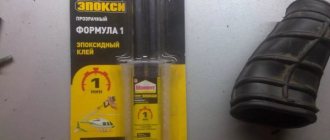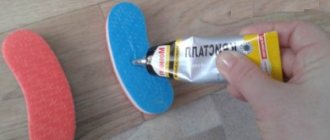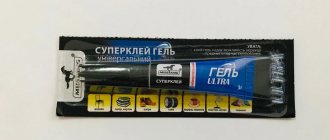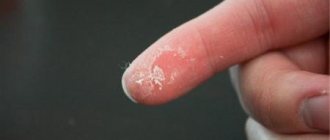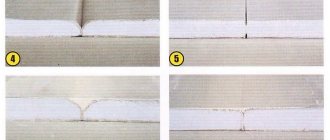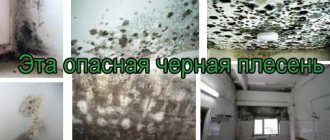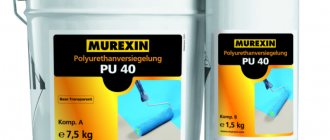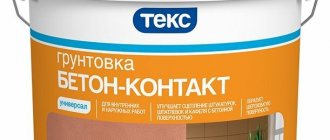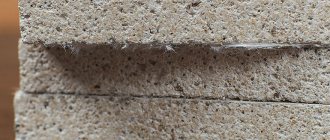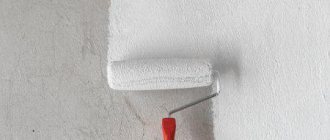Epoxy glue is one of the most popular. It is used in construction (for fixing tiles and filling cracks in concrete slabs), in mechanical engineering (for fastening brake pads, repairing gas tanks, fastening casings), in shipbuilding (for assembling fiberglass structures). It is no less widely used in everyday life - it is indispensable for repairing shoes and furniture, for sealing pipes, and creating various crafts.
Purpose of epoxy glue
Every craftsman, builder, installer, and technical worker knows what epoxy glue is. This is an adhesive containing epoxy resin (epoxy), a polymer material that has excellent adhesion to different surfaces. Even with the advent of more modern adhesives on the construction market, epoxy does not lose popularity.
The adhesive composition is most often used in construction. It is ideal for concrete and for metal, wood and glass. Like cold welding, epoxy-based material is needed for bonding plastics (polypropylene, polycarbonate and many other types of plastic). The versatility of the glue makes it suitable for working with rubber, ceramics, and it is intended for stone (granite, marble, artificial materials). Epoxy resin is used to fill floors; it is part of primers, putties, tile mixtures, and mosaics.
The product is widely used in everyday life. Due to its good adhesion and suitability for plastic, it can be used to glue various products: equipment, electronics, computer parts. The product is useful in repairing heating radiators, dishes that do not come into contact with food, wood and wood products, jewelry and leather jewelry.
In the automotive industry and auto repair, epoxy adhesive is suitable for bumpers with cracks, chips, and for sealing a car’s gas tank and radiator with minor defects. Epoxy glue is used to repair boats and boats, fill various technological components, and fix solar panels.
Application area
Before establishing the limits of applicability of epoxy adhesive, we will highlight the defining properties characteristic of the cured polymer. During the reaction between the components, there is no change in volume, that is, the seam does not shrink. It is formed with uniform density throughout the entire layer and does not form pores or cracks.
High adhesion rates allow you to glue products from a wide variety of materials. Only Teflon, polypropylene, silicone and plexiglass are exceptions.
The formed seam is not afraid of exposure to organic chemicals. It is also resistant to acids and alkalis. The operating temperature range for epoxy resin products is from –20°C to +250°C degrees. In this range, the polymer completely retains its properties. A durable and flexible layer of cured adhesive securely holds parts together even under conditions of high shock and vibration loads. Epoxy glue also has an additional function. It is a good electrical insulator.
It is noteworthy that the glue does not interfere with aesthetics. Various pigment substances or dyes can be added to the resin. Aluminum chips not only give the composition a silver color, but also increase its thermal conductivity. The main disadvantage of the material is the need for strict adherence to the technology of its preparation and use. We are talking about the correct ratio of components, as well as limited time for work. Once the glue has set, it is no longer possible to change the shape of the seam.
The above qualities of epoxy adhesive allow us to determine the scope of its application. First of all, it should be noted that it is in high demand in everyday life. As for industrial areas, epoxy is used in almost all industries.
- Construction. The resin is a waterproofing agent and also provides a screed for concrete surfaces.
- Automotive industry. Epoxy and fiberglass are used to make fiberglass, which serves as the main material for bumpers and some body parts.
- Shipbuilding. Ship hulls are coated with epoxy resin.
- Aircraft manufacturing. Resin is part of the composite materials from which propeller blades and some other load-bearing elements are made.
- In creativity. Epoxy is widely used in filling jewelry, and is also used in artistic decoration techniques.
Specifications
Epoxy adhesive mixture is a synthetic mass in which an irreversible chemical reaction occurs to form a durable material. The composition of resin-based adhesive may include a modifier, hardener, solvent, fillers, and plasticizers.
The main component in the adhesive composition is epoxy resin. It also consists of epichlorohydrin with phenol or bisphenol. The resin can be modified. Rubber modified epoxy resin improves toughness properties. Organophosphorus modifiers reduce the flammability of the product. The addition of the Laproxiv modifier increases elasticity.
Compounds of aminoamides, polyamines, and organic acid anhydrides can act as hardeners. Mixing epoxy resin with a hardener allows a thermosetting reaction to occur. The share of hardeners is 5-15% of the resin.
Solvents can be xylene, alcohols, acetone. The solvent content does not exceed 3% of the total volume of the solution. Plasticizers are added to increase the reliability of fastened parts. For this purpose, ester compounds of phthalic and phosphoric acid are used.
Fillers are used to add mass and additional physical characteristics to the finished product. Dust of various metals, mineral powders, fibers, cement, sawdust, and micropolymers are used as fillers. The amount of additional fillers can vary from 1 to 300% of the total weight of the epoxy resin.
Work with epoxy glue is carried out starting from +10 degrees. After the mixture hardens, increasing the temperature increases the rate of complete curing. Depending on the composition, curing time can vary from 3 hours to 3 days.
Temperature range during operation is from -20 to +120 degrees. The particularly durable adhesive composition can withstand temperatures up to +250 degrees.
We recommend: Using superglue with soda - a durable tool for repairing plastic products
Epoxy adhesive has hazard class 3 according to GOST 12.1.007-76 classification and is a low-hazard irritant, but can cause an allergic reaction on the skin. It is environmentally hazardous and toxic when released into water bodies.
The lifetime of the prepared mixture ranges from 5 minutes to two hours, depending on different manufacturers. Different glue compositions show strength from 100 to 400 kgf per 1 cm2. The average density per m3 is 1.37 tons. Elasticity upon impact and displacement of the seam is in the range of 1000-2000 MPa. The hardened epoxy layer shows resistance to gasoline, alkalis, acids, salts, oils, and kerosene. Destructible in toluene and acetone.
Epoxy compounds vary in release volume and weight. Components of 6 and 25 ml are poured into syringes. Double syringes are convenient to use at home for gluing small surfaces. Universal epoxy adhesive mixtures are characterized by a long pot life of up to two hours and are available in containers of 140, 280 and 1000 g. Fast-curing epoxy approaches the hardening speed of cold welding, is produced in tubes of 45 and 70 ml and in buckets and bottles of 250 and 500 g . For industrial use, epoxy components are supplied in barrels of 15, 19 kg.
In universal liquid epoxy compounds, the main color is white, yellowish and transparent. Adhesive for metals in silver, gray, brown shades. You can find pink epoxy produced.
For home use
Modern industry produces several brands of glue for home use.
The most popular compositions are:
- Epoxy adhesive “Moment” is sold in all construction stores and has a price accessible to the general consumer. The glue is packaged in small tubes containing a plastic mass weighing 50 grams, or large packages designed for reusable use. The adhesive can be used for several months after opening if stored at temperatures up to +25 °C.
- Glue-plasticine "Contact" - used for gluing surfaces in contact with moisture - pipe joints, bathroom shelves. The glue hardens in one to two minutes.
- Cold welding adhesive – designed for instant connection of metal products. Does not damage the edges of metal parts, glues alloys that cannot be welded.
- EDP epoxy adhesive is designed for bonding different surfaces - from metal to glass and porcelain. According to consumer reviews, it is considered optimal in terms of price-quality ratio. It is used for repairing car parts, sealing cracks in plumbing and other purposes.
Universal or specialized glue
The scope of application of epoxy-based adhesives is very wide. They are used in the production of ships, aircraft, cars and in construction. The compositions are in demand in everyday life. They can be used to repair furniture, appliances, decorative items, floor and wall coverings, and more. Epoxy is used to seal various utility lines and is used to make souvenirs, jewelry, crafts, and much more.
For everyday use, choose universal compositions or specialized materials. These types of epoxy glue are most in demand.
"Moment" by Henkel
Two lines of epoxy mixtures are produced. One-component "Epoxylin" and "Super Epoxy", consisting of two components. For ease of mixing, the latter is available packaged in two syringes. These are universal compounds that form a durable joint that, once cured, can be sanded, painted and even drilled.
Photo: Instagram kantstovary_perm
Cold welding
Specialized mixtures for repairing items made of various metals. They have increased strength and high curing speed. Most often they are produced as a plastic mass, but they can also be in liquid form. The products are represented by different brands under the names “Poxipol”, “Epoxy-titanium”, “Epoxy-metal”.
EDP glue
This is the abbreviated name for epoxy-diane material with polyethylene polyamine. It is a universal adhesive and works with various substrates: wood, leather, concrete, stone, ceramics, rubber, etc. Acquires stated strength within 24 hours after application. Produced by different companies under the brands EPD, Himkontakt-epoxy, Epox-universal.
You can make your own epoxy glue at home. How to do this is shown in the video.
Types of epoxy glue
Epoxy glue is:
- single-component - this type is intended for small household work, such as shoe repair or sealing a seam on a water pipe. Sold in tubes of several milliliters. It must be used immediately after opening, since the hardener and composite composition are combined in one container and harden quickly;
- two-component - this glue is often used when carrying out large-scale work. The hardener and epoxy resin with various additives are either in two separate bottles (in this case, some kind of glassware is needed for mixing - a plate, a glass), or placed in a syringe with double cylinders and pistons - then the components are mixed automatically, passing through a single tip.
We recommend: Bustilat glue - types, characteristics and application features
In addition, epoxy glue is produced in two forms - liquid, which is no different from other types of glue, and solid, more reminiscent of plasticine or polymer clay.
The well-known “cold welding” is nothing more than a type of solid epoxy glue.
Helpful tips for storing and disposing of glue
The manufacturer recommends storing the composition in a dry place, in an upright position. The integrity of the packaging should not be compromised, otherwise air will get inside, which will deteriorate the quality of the glue. The composition should only be stored at room temperature. Packaged epoxy can be stored for one to three years, but its properties deteriorate over time.
Working with glue requires the use of protective equipment, since it is very difficult to clean. While the composition is still liquid, you can wash it off with soapy water or acetone if the glue is already beginning to polymerize. Cured epoxy is very difficult to remove; you can try the following methods:
- Heating with an iron or hairdryer. When exposed to high temperatures, the glue softens and is easier to remove.
- Freezing with refrigerant. After this treatment, the composition becomes brittle and breaks off from the surface.
- Use of solvents. The glue is moistened with aniline, toluene, ethyl alcohol, etc. After some time, scrape off the stain.
Photo: Instagram kamindustry.ru
Composition and properties
Epoxy adhesives from different manufacturers may contain different components, but the basic composition is always the same, it complies with GOST and the attached certificates. Two main substances in the composition are strictly required:
- epoxy resin itself;
- liquid or paste hardener.
Polyamines, carboxylic acids, and aminoamides are used as a curing composition. One-component adhesives always contain solvents (acetone, xylene, alcohols), which prevent the mass from hardening before contact with air and evaporation. The following can act as modifying additives and fillers for glue:
- synthetic rubber;
- formaldehyde resin;
- fiberglass;
- clay, chalk;
- aluminium oxide;
- vanadium, nickel, zinc powders;
- organosilicon resins.
The glue also includes plasticizers, which give it plasticity. Thanks to them, the mixture hardens and does not crumble and remains elastic. The percentage of the main mass and various fillers varies widely - from 5 to 50%!
All of the above binding components provide the epoxy adhesive with the desired properties:
- optimal density;
- seam strength;
- high curing speed;
- resistance to oils, gasoline, water, atmospheric factors;
- resistance to cracks and shrinkage.
It is also worth noting that glue does not conduct current - it is a dielectric, so it is often used to insulate electricity.
Preparation and execution of work
As a rule, the work of gluing parts is divided into three stages.
- The first stage is characterized by the preparation of the surfaces to be bonded.
- At the second stage, the adhesive composition is prepared.
- The third stage is the direct gluing of parts.
Tools and materials are prepared in advance, otherwise valuable time can be lost during the work process. The components are mixed in plastic containers. If the components are presented in the form of pastes, then they are mixed on a plastic tablet. Some manufacturers supply such tablets complete with glue.
The use of epoxy glue does not involve the use of special means or tools, since the instructions contain a sequence of trivial actions, however, it is strictly not recommended to deviate from the manufacturer’s recommendations.
They indicate the proportions of the components that will have to be mixed. It is not possible to give examples here, since they can be different, from 1 to 1 to 1 to 10, where ten parts are the main composition, and one part is the hardener.
There are two ways to reduce viscosity.
- The first is to use a special solvent, which is added to the base composition to the desired consistency, and then mixed with the hardener. The main difficulty is that the volume of the added solvent must be taken into account when drawing up the proportions of the components.
- The second method does not require additional materials. It is necessary to heat component “A” to 50-60°C degrees, and then mix with the hardener.
Usually the instructions indicate the proportions or volumes of the components. In the latter case, it is most convenient to use medical syringes, since they have appropriate graduations.
Useful to know > How to fill a picture or photograph with epoxy resin, available examples
It is important to understand that there is no clear distinction between glue and compound, and materials can partially perform secondary functions, replacing each other. Fillers and additives are added to the glue, which can adjust some characteristics.
- Asbestos improves heat resistance and also has a cementing effect on the composition.
- Titanium dioxide gives the resin a white color.
- The addition of iron increases the thermal conductivity of the adhesive joint and also makes it fire-resistant.
- Silicon dioxide increases the strength of the resin.
- Soot is used as a dye, the glue turns black.
- Aluminum oxide increases the dielectric properties of the resin.
Some substances act as fillers to increase volume. It is convenient to use sawdust or fiberglass. Such substances are used in filling cavities and openings where large volumes of resin are required.
The basic scheme for performing the work begins with preparing the base, although some prefer to first apply the adhesive composition and then let it settle a little so that the viscosity reaches the desired levels. The exception is one-component formulations, which do not need to be prepared in advance. They are removed from the packaging and, if necessary, heated to the desired temperature.
The surfaces to be glued must be treated to maximize their adhesion to the glue. To do this, remove dirt and dust, then degrease and dry the surface. When gluing two parts, glue is applied to only one of them. Two parts or two parts are pressed tightly against each other and fixed in a stationary position. The elements are forcibly held motionless for about 10 minutes. Further curing of the adhesive occurs without external intervention. Complete polymerization of the resin occurs within 24 hours.
While performing the work, it is useful to remember a few tips from experienced craftsmen. The temperature of the composition must correspond to the ambient temperature. A bottle of epoxy that is too cold is heated in a steam bath. Once opened, the resin can be stored and reused, but it should be placed in the refrigerator, removing any air from the package if possible.
How long does it take to dry?
The drying time of the adhesive solution depends on the air temperature and the proportions of the main components in the mixture. Adding a larger proportion of hardener to the epoxy resin will help speed up the hardening of the finished mixture. The hardening speed is increased by heating the adhesive joint after the composition has set. The higher the temperature, the faster the epoxy will cure.
The time for complete hardening determines the type of epoxy adhesive. “Cold welding” hardens within 5-20 minutes. Liquid EDP mixtures thicken in an hour, set in two hours, and completely polymerize within a day.
If the epoxy mixture does not harden within the time specified in the instructions, then there may be two reasons for this - the adhesive components are expired and have lost their qualities, or there may be a violation in the preparation of the mixture or incorrect proportions. It is necessary to re-knead using precise measurements.
It is not recommended to work with epoxy in the cold. In this case, it is difficult to dry the adhesive joint, since crystallization of the components occurs. Epoxy should be used at temperatures from +10 to +30 degrees. Resistance to viscosity in heat allows for better quality work.
We recommend: Procedure for using cold welding to join metals and alloys
Sturdy material
Currently, epoxy is known as the most durable substance based on synthetic resins. Losses when working with the polymer are minimal, even at high temperatures (especially if the type of polymerization is not cold, but hot). For example, some ready-made compositions tolerate short-term temperature effects of 250°C degrees, or even 400°C.
In terms of strength when tested for tension and compression, the hardened composition can easily be compared with concrete. Record values are not achieved in all proportions.
The main parameter for measuring the strength level of epoxy resin in the solid state is kgf/cm² - kilogram-force per square centimeter of plane.
| Action | Limit, kgf/cm² |
| Compression | 1000-4000 |
| Stretching | 400-1400 |
| Bend (kink) | 800-2200 |
| Elasticity | 25000-50000 |
The given indicators were obtained from a study of cured epoxy resin without filler.
Let us remember that in the liquid state the epoxy mixture has high adhesive properties. This is confirmed by the study of adhesion strength with various metals. The adhesive joint can withstand a load of 350 kg/cm².
Useful to know > How long does it take for epoxy glue and resin to dry, how long to wait for complete hardening
Testers have found that when testing the bending and torsion of an epoxy product, the strength exceeds the known indicators of the strongest materials.
Existing varieties
The central component of the glue is epoxy resin. The material is a synthetic oligomer that is used without additional substances. Epoxy resin is an indispensable component of paints and finishing materials. The consistency of the resin depends on the material it is a part of.
By composition
The epoxy adhesives market is represented by two groups:
- one-component;
- two-component.
The one-part epoxy adhesive is ready for bonding once the storage container is unsealed. The composition, in addition to epoxy resin, contains organic solvents that prevent polymerization. The one-component composition is used for gluing small parts, sealing plumbing seams and connecting pipes. Another area of household use is handicrafts. You cannot store the glue in an open state, because it dries quickly, which is a disadvantage of one-component epoxy adhesive
Among the advantages of the material, it is important to note:
- reusable;
- ease of application;
- affordable price;
- ease of storage;
- non-toxic;
- strength after polymerization.
The one-component composition hardens at room temperature, so no heating devices are required. The two-component formulation comes in two separate tubes. One tube contains a substance based on epoxy resin, and the second contains a hardener that performs polymerization. The hardener is available in liquid or powder form. The advantages of the composition are:
- gluing two different materials;
- strength and elasticity of the connection;
- ease of application;
- no harmful emissions.
Two-component epoxy adhesive holds metal, wood, plastic and glass parts in place. Materials can be combined in any sequence, which does not affect the adhesive strength
The connection maintains elasticity, which is important under vibration loads. The glue is applied with a small spatula or stick
Before applying to the damaged area, mixing the two components is required. A correct calculation of the amount of hardener added to the base composition is required. If there is an excess of hardener, the “survivability” of the solution will be low, polymerization occurs quickly, which complicates gluing. A lack of hardener prevents the development of strength, which will lead to an unreliable connection of parts.
By consistency
Adhesives differ not only in composition, but also in consistency. Depending on the viscosity of the glue, there are:
- gels;
- liquids;
- plastic masses.
The gel has less fluidity than liquid, so it is easier to apply to areas with major damage. Adhesives with gel compositions are consumed more economically than liquid compositions. Deep damage requires intense fluidity of the composition to envelop the rupture site. Liquid adhesives are easier to apply and cover the treated area on their own. The polymerization time of liquid adhesives is longer than that of gel adhesives. The plastic masses of epoxy adhesives are a substance similar to plasticine. Components are supplied in separate packages or in one package. If it is one package, then the hardener is on top of the epoxy component.
To begin polymerization, the hardener and epoxy part are thoroughly kneaded by hand. The components are mixed until smooth. After this, you have fifteen minutes to apply glue to the damaged area. Another name for two-component elastic compounds is cold welding. Plastic adhesive is suitable for gluing wooden, metal and plastic surfaces. The disadvantage of this method is the protruding mass of glue after polymerization.
Popular brands
Epoxy resin-based adhesives can be purchased at either a hardware store or an auto parts or building materials store. Today, the buyer has about a dozen brands to choose from, the price of which depends on the quality of the glue or its brand.
The most popular brands are such glues as “Moment”, “Contact”, “Super-Hvat”, “Zubr”, “Class”, “Secunda”, “K-15 Compound”, “Poxipol”, “EDP”, “ Abro." This is not a complete list of rated brands, since their list depends on trade relations with suppliers. The buyer does not need to select a resin according to its technical characteristics, since all presented models are positioned as universal means for gluing metal, concrete, glass, wood and plastics.
